What's In a Name? Pelargonium vs Geranium
-
When is a geranium not a geranium? When it is a pelargonium of course! And that is much more often than you think. The stalwarts of the summer patio, those brilliantly colored, lollipop-shaped blooms spilling over the edges of containers are not, in fact, geraniums, they are pelargoniums. So what's the difference?
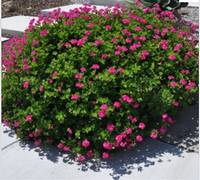 Geranium ‘Pink Blizzard‘ Photo: PlantMaster
Geranium ‘Pink Blizzard‘ Photo: PlantMasterGeraniums
True geraniums, also known as cranesbills, are hardy perennials that generally die down in the fall and reappear in the spring. Most are low-growing, spreading plants that work wonderfully as groundcovers. They tolerate shade and have delicate-looking foliage and blooms in shades of white, pink, lavender, and blue. There are upright and trailing forms, plants with intricately marked and scented foliage, and something for just about any gardener's taste.
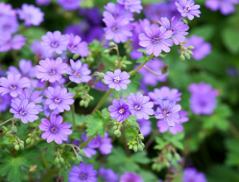 Geranium ‘Bill Wallis’ Photo: PlantMaster
Geranium ‘Bill Wallis’ Photo: PlantMaster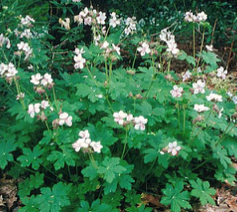 Geranium ‘White Bigroot’ Photo: PlantMasterPelargoniums
Geranium ‘White Bigroot’ Photo: PlantMasterPelargoniums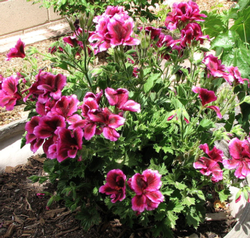 Pelargonium ‘Domesticum’ Photo: PlantMaster
Pelargonium ‘Domesticum’ Photo: PlantMasterPlants that gardeners have been calling geraniums for hundreds of years are members of the Geraniaceae family, as are true geraniums. The confusion with the names arose when pelargonium plants, native to South Africa, were introduced into Europe. Nurseries labeled these new exciting plants from South Africa as geraniums until some observant botanists noted differences in the imported plants and identified them with the botanical name of pelargonium. Nurseries were loath to change, so the common name of geranium persisted.
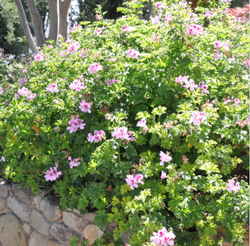 Pelargonium ‘Copthorne’ Photo: PlantMaster
Pelargonium ‘Copthorne’ Photo: PlantMaster
Pelargoniums are woody or shrubby perennial plants that bloom spring through fall. They sport clusters of flowers with five petals shaped like saucers, stars, butterflies, trumpets, or funnels, in eye-popping colors you can see a block away. There are upright and trailing forms and plants with intricately marked and scented foliage, among other options.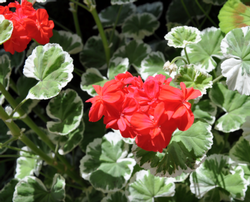 Zonal pelargonium ‘Wilhelm Langguth’ Photo: PlantMaster
Zonal pelargonium ‘Wilhelm Langguth’ Photo: PlantMaster
The most common type of pelargonium is the zonal, adorned with large, globe-shaped flowers of fire-engine red, florescent orange, soft peach, salmon, or creamy white. Distinct bands of darker pigments, tri-colored bands, or silver or white bands mark the fancy leaves of the pelargonium.
Blooms of the regal pelargoniums, often referred to as "Martha Washington geraniums," have spectacular showy flowers reminiscent of azalea blossoms. Sometimes, at the peak of the summer season, the dark-green, crinkled leaves are almost invisible, completely smothered with blossoms. Flower colors range from pale to vivid shades of white, purple, pink, red, and maroon, often in captivating combinations.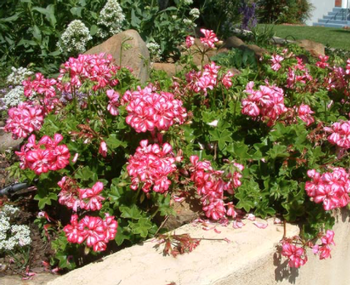 Pelargonium ’Peltatum’ Photo: PlantMaster
Pelargonium ’Peltatum’ Photo: PlantMaster
The vine-like growth habits of ivy geraniums make them a favorite for window boxes and hanging baskets. Smooth, leathery, succulent leaves frame jewel-tone blooms with narrow petals and less dense flower heads than zonal type.Grown primarily for their foliage, the soft, finely textured leaves of scented pelargoniums have intriguing shapes and coloration along with pungent fragrances of rose, nutmeg, apple, peppermint, and lemon. Leaves can be used for making potpourris, sachets, and tea flavorings. Scented pelargoniums often can be grown as houseplants.
How to grow pelargoniums
Pelargoniums thrive in light and loamy well-drained soil that receives six to eight hours of sun each day. In hot climates, they enjoy some mid-day shade. Protect them from cold; most will not survive temperatures below freezing. Water regularly but do not over water. Nothing can kill this plant quicker than soggy soil due to poor drainage. Deadhead spent flowers regularly to stimulate repeat bloom.
Growing plants in containers
If you are growing plants in containers, apply a balanced fertilizer after new growth appears and repeat the application every few weeks throughout the growing season per product label directions. If your plants are growing in rich garden soil, they generally do not need any additional plant food.
Common pests of geraniums and pelargoniums
The most common pests of geraniums and pelargoniums are aphids, whiteflies, mealybugs, and spider mites. All of these insects suck nutrients from the plants and excrete excess sugar that in turn provides a source of food for black sooty mold. Spraying the insects with a diluted soap solution can often be all that is needed to wipe out the pests. Mealybugs can be a little trickier as they are covered by a cottony mass and often live where the stem and leaf join. Use a cotton swab dipped in alcohol to knock them out.
Original article by Nanette Londeree
Edited for the Leaflet by Lisa MacCubbin







